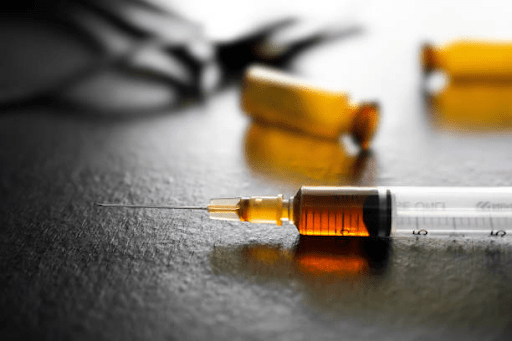Liver transplantation is a life-saving treatment option for patients with end-stage liver disease or acute liver failure. When a deceased donor’s liver is not available, living donor transplantation provides another possibility. Living donor liver transplantation (LDLT) involves surgically removing a portion of a healthy person’s liver to transplant into the recipient. LDLT is an innovative procedure that has transformed options for patients needing a liver transplant.
This article explores the background, procedures, benefits, risks, and outcomes of living donor liver transplantation.
Background of Living Donor Liver Transplants
The liver has the unique ability to regenerate and regrow to full size soon after partial removal. This makes donating part of the liver for transplantation possible. Adult-to-adult live donor liver transplant was first performed in 1989. Since then, LDLT has become an established practice worldwide, helping reduce waiting list mortality. Patients who receive living donor livers generally have higher short-term survival rates than those receiving deceased donor livers.
Evaluation and Procedures
Potential living liver donors undergo extensive medical, surgical, and psychosocial evaluation to determine if they are suitable candidates. Donors should be between 18 and 60 years old, in excellent health, have compatible blood types, and have a strong desire to donate. The donor operation removes 20-60% of the liver, depending on the recipient’s need.
The donor’s liver remnant then regrows to 90% of its original volume within 2-3 months. In the recipient operation, surgeons implant the donated portion of the liver in the same anatomic position. Recipients require immunosuppressant medications long-term to prevent organ rejection.
Benefits of Living Donor Liver Transplant
There are several advantages to receiving a living donor liver transplant:
- Shorter wait times: By using a living donor, recipients avoid long waits of 6 months to several years for a deceased donor’s liver. This prevents further deterioration of the recipient’s health while on the waitlist. LDLT provides a transplant in a timely manner when the recipient needs it most.
- Planned transplant: LDLT occurs when the recipient is still relatively healthy instead of when their condition has worsened significantly. Doctors can schedule the surgery before the patient develops major complications of end-stage liver disease. This helps set the recipient up for better recovery outcomes.
- High-quality organ: Living donor livers are of extremely high quality since they come from healthy people who undergo comprehensive testing. These donors do not have liver disease issues or damage that would impact the function of their donated liver portion. The organ is optimal for transplantation success.
- Excellent survival rates: Survival rates for LDLT recipients at 1, 3, and 5 years are 84-92%, 79-90%, and 75-82% respectively. These numbers are higher than liver transplant survival rates from deceased donor liver transplants. The liver functions well, allowing recipients to live longer, healthier lives.
- Psychological benefits: Recipients receive huge psychological boosts knowing someone cared enough about them to make the sacrifice and go through surgery to donate part of their liver. This emotional support system promotes healing and resilience during recovery.
Risks and Outcomes
While LDLT benefits recipients, it does pose risks to healthy donors. Risks include complications from major surgery, infections, bile leaks, blood clots, post-surgery pain, and rare donor mortality of 0.2-0.5%. Most donor complications are minor and treatable. For recipients, risks include bleeding, infections, artery or bile duct problems, rejection, and need for re-transplantation.
In the long term, recipients can achieve healthy lives with normal liver function. Adult living donor liver transplantation now has an excellent track record of safety for both donors and recipients.
The Impact of Living Donor Liver Transplants on Survival Rates
Living donor liver transplantation has led to substantial improvements in survival rates for patients with liver failure. According to research, the liver transplant survival rate at 1, 3, and 5 years for recipients of living donor livers is 84-92%, 79-90%, and 75-82%, respectively. This represents a significant increase compared to previous eras when deceased donor organs were the only option.
Several key factors account for the enhanced survival rates with LDLT:
Shorter Cold Ischemia Times: Living donor livers experience minimal cold ischemia time versus deceased donor livers. This reduces damage to the liver during transport and implantation.
Younger Donor Age: Most living donors are under 60 years old. Their livers are healthier and function better after transplant.
Meticulous Surgical Technique: With LDLT, surgeons can carefully plan the procedures without time pressures. This leads to excellent technical outcomes.
Better Patient Condition: Recipients are often still relatively healthy when they receive a living donor transplant. This helps them recover faster.
Summary
In situations without timely deceased donor livers, living donor liver transplant provides life-saving alternatives. Partial livers donated by living donors regenerate in both donor and recipient. Meticulous surgical techniques and coordinated care lead to favorable outcomes.
Survival rates now match or exceed those from deceased donor transplants. Despite a major surgery for the donor, complications are uncommon. For desperate recipients with end-stage liver disease, LDLT delivers hope and the priceless gift of health. Continuing improvements in selection processes and surgical practices strive to make it even safer.
So, if you are thinking of getting a living donor liver transplant and want to consult with the best liver transplant surgeon in the world, Dr. Vivek Vij is here to help. He has 20+ years of experience in doing successful liver transplant surgery with utmost precision and care. Book an appointment today to know more.






